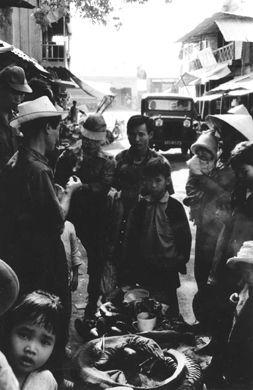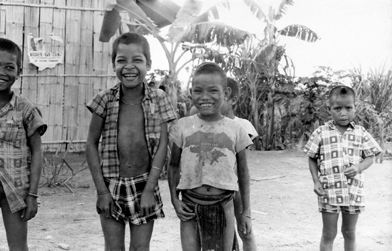 The local civilian militia (CIDG) claimed they’d just happened to hear something walk through their night ambush site. More likely the only thing they’d ever been planning to ambush was animal, not human. The giveaway was the condition of the hide: if they’d shot it by mistake, it would have been riddled with holes. Instead, the tiger had gone down with just one perfect shot. The pelt was valuable, but the real prize were the teeth and organs, destined for the local apothecary.
The local civilian militia (CIDG) claimed they’d just happened to hear something walk through their night ambush site. More likely the only thing they’d ever been planning to ambush was animal, not human. The giveaway was the condition of the hide: if they’d shot it by mistake, it would have been riddled with holes. Instead, the tiger had gone down with just one perfect shot. The pelt was valuable, but the real prize were the teeth and organs, destined for the local apothecary.
 The pharmacist in the town market in Cheo Reo worked hard to impress townspeople with the potency of his remedies, prepared from organs and excretions of powerful creatures like the tiger, or the reptile curled up on top of the barrel. A bear’s head and hide are just out of sight. My personal favorite: a brew of rice wine mixed with bat’s blood that was supposed to combat tuberculosis.
The pharmacist in the town market in Cheo Reo worked hard to impress townspeople with the potency of his remedies, prepared from organs and excretions of powerful creatures like the tiger, or the reptile curled up on top of the barrel. A bear’s head and hide are just out of sight. My personal favorite: a brew of rice wine mixed with bat’s blood that was supposed to combat tuberculosis.






